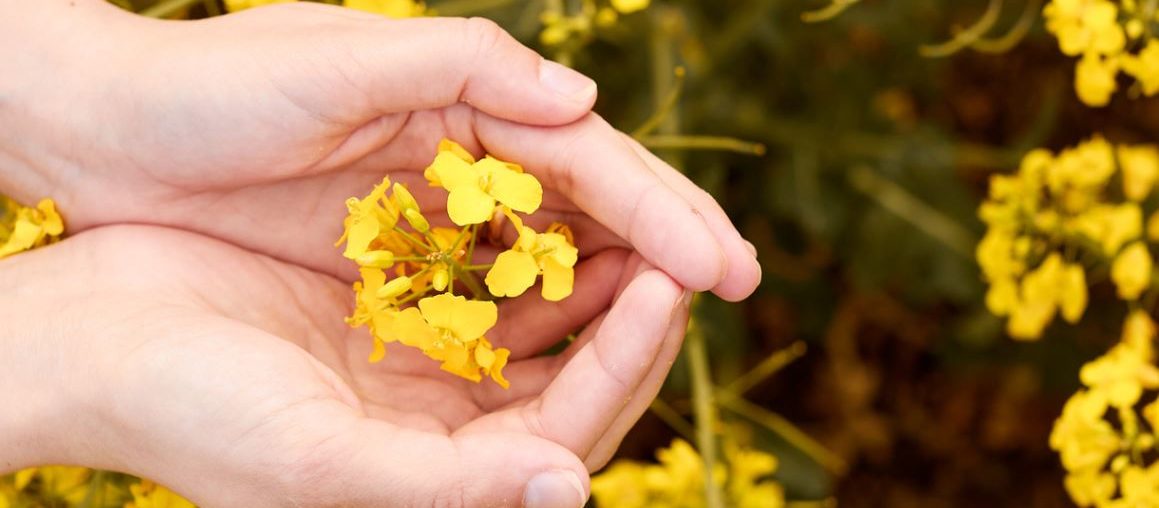A green manure is a crop intended only to be buried superficially in the soil in order to improve its fertility. This process dates back to the beginnings of agriculture, well before the Christian era. All our explanations on how to cultivate it.
After World War II, until the 1960s, green fertilization was widespread; the legumes intended for feeding cattle (clovers, vetch, alfalfa, etc.) and equines (crimson clover) set a good precedent for other crops.
What are the advantages of green manures?
- Climate side, they protect the soil against bad weather; in winter, the cold is less brutal. In summer, this plant cover makes the sun’s rays less violent avoiding sunstroke; drought and temperature changes at ground level are reduced.
- They promote humidification of all woody organic matter (straw, crop waste.
- They eliminate or decrease the proliferation of wild grasses with their cleaning power, especially on an abandoned plot.
- They spare the soil from erosion due to runoff from heavy rains.
- They improve the soil structure by draining it by their roots which penetrate deep into the earth.
- They reactivate the mineral elements of fertilizers carried in depth by the rains, thanks to the great development of their roots.
- They stimulate the microbial life of the soil by providing abundant food.
- They ensure the protection of useful fauna : ladybugs, enemies of aphids) live in legumes.
Good to know : Green manures belonging to legumes (Fabaceae) fix nitrogen from the air by symbiont bacteria in their roots (rhizobia) and supply the soil with nitrogen drawn directly from the air and fixed by these microorganisms.
Vary cultivated plants
On the same plot, it is preferable to change green manures as often as possible, depending on the family. This allows for an additional rotation. Obviously, it is the legumes that come back most often.
How are sowing
With one exception, green manures are broadcast on the fly, in well-prepared soil.
Using a hooked fork (or hook), the seeds are buried more or less deeply depending on their size:
- superficially for fines;
- up to half a centimeter for clovers;
- a centimeter for the trefoil, the kitten;
- more than 2 cm for vetch, sainfoin
- between 4 and 5 cm for the faba bean.
In heavy, clayey soil, the seeds should be buried less deeply.
Return to the ground
For legumes, the best time to return this plant food to the soil is at the start of their flowering.
When the vegetation is very tall, mow in sections using a hand tool or a brush cutter.
Finally, gyrobrush this plant material with a mower, then spread it out on the ground, and let it wilt for 5 to 8 days.
After this period, bury in a flat digging or incorporate into the ground using a tiller set to a maximum depth of 10 cm.
It is very beneficial to bury the compost that you have made yourself at the same time. By being mixed with the compost in this way, the green organic matter will be digested more quickly by the microorganisms.
The time between landfill and seedlings
Burying is done at least 4 to 5 weeks before sowing.
Our advice: avoid allowing green manures to rise to seeds. Otherwise, they will reseed and invade the plot. This is particularly the case with phacelia.
The different sowing formulas
Many sowing formulas exist according to the family and the time of the burial.
The quantities below are given for one are.
Brassicaceae (Crucifers)
- 100 grams of rapeseed (Brassica napus) ; sowing from March until September 15th. Bury before or at the end of winter (before flowering).
- 150 to 200 grams of white mustard (Sinapis alba) ; sowing from April to October; to be avoided behind a cruciferous crop. Bury before frost and flowering.
- 100 to 120 grams of rape (Brassica rapa subsp. Oleifera) ; sowing from April to September, preferably in light and limestone soils. Bury before frost.
Poaceae (Grasses)
- 200 grams of coarse-seeded millet (Panicum miliaceum) ; sow in May, in rows 30 cm apart. Bury after three months of development.
Poaceae (Grasses) and Fabaceae (Legumes)
- 500 grams of oats (Avena sativa) + 1.5 kg of winter beans (Viciafaba var. Minor) ; sowing from August to September 15. Bury in early spring.
- 550 grams of rye (Secale cereale) + 1.5 kg of vetch (Vicia sativa) ; sowing in March or early September. To be returned to the ground, depending on the time of sowing, in summer or in spring.
- 400 grams of rye (Secale seceale) + 500 grams of winter gray field peas (Pisum sativum) + 1 kg of vetch (Viczà sativa) ; sowing from August to September 15. Bury at the end of winter.

Hydrophyllaceae (or Hydrophylleae)
- 150 to 200 grams of phacelia (Phacelia tanacetifolia) ; sowing from April to August, rapid growth. Very honey, this pretty plant is effective against parasitic nematodes. Bury in summer or fall, about 4 months after sowing.
Fabaceae (Legumes)
- 200 grams of fenugreek (Trigonellafœnum grecum) ; sowing from spring to the end of July. Bury when the vegetation is sufficiently developed, before flowering.
- 2 to 2.5 kg of spring beans (Vicia faba var. Minor) ; sowing from February 15 to mid-March. Bury when plant flower buds appear.
- 100 to 200 grams of bird’s-foot trefoil (Lotus cornzculatus) ; sowing in March, perennial. Bury in early spring or fall.
- 1 to 2 kg of white sweet lupine (Lupinus albus) ; sowing from March to July. Recommended for strong and cool soils. Bury approximately after 3 months of vegetation.
- 1 to 2 kg of yellow sweet lupine (Lupinus luteus) ; sowing from March to the end of July, preferably in light and acid soil. Bury about 3 months after emergence.
- 250 grams of common alfalfa (Medicago sativa subsp. Sativa) ; sowing from April to August, preferably in clay-limestone or clay-siliceous soil. To be left on site for at least 2 years. Rotate before flowering or bury in the fall of the second year.
- 200 to 500 grams of white sweet clover (Melilotus albus) ; sowing in June. Tolerates arid lands, dreads too wet soils – can stay in place for two years because it grows back. Bury in the fall.
- 100 grams of minette (Medicago lupulina) and 20 grams of dwarf white clover (Trifolium repens) ; sowing from March to September 15 in cool, limestone soil. Return to the ground in early spring or fall depending on the time of sowing.
- 700 grams of winter gray field peas (Pisum sativum) + 1.2 kg of vetch (Vicia sativa) + 1.5 kg of broad bean (Vicia faba) ; sowing from August until mid-September. Bury before or after winter.
- 1 to 2 kg of sainfoin (Onobrychis viciifolia) also called esparcette ; sowing in March-April in dry, hot and limestone soil. Bury before flowering.
- 500 grams of Serradelle or cultivated ornithope (Ornithopus sativus) ; sowing in spring, prefers acidic soils. Bury before frost.
- 100 to 150 grams of Alexandrian clover (Trifolium alexandrinum) ; sowing from April 15 to mid-August, preferably in siliceous clay soil. Bury when it is in buds, before frost.
- 200 grams of crimson or red clover (Trifolium rubens) ; sowing in August-early September. Bury as soon as the flower buds appear.

Polygonaceae
- 600 grams of buckwheat (Fagopyrum esculentum) ; sowing from March to the end of July in poor and acidic soil. Bury about 3 to 4 months after sowing.
Read also :









